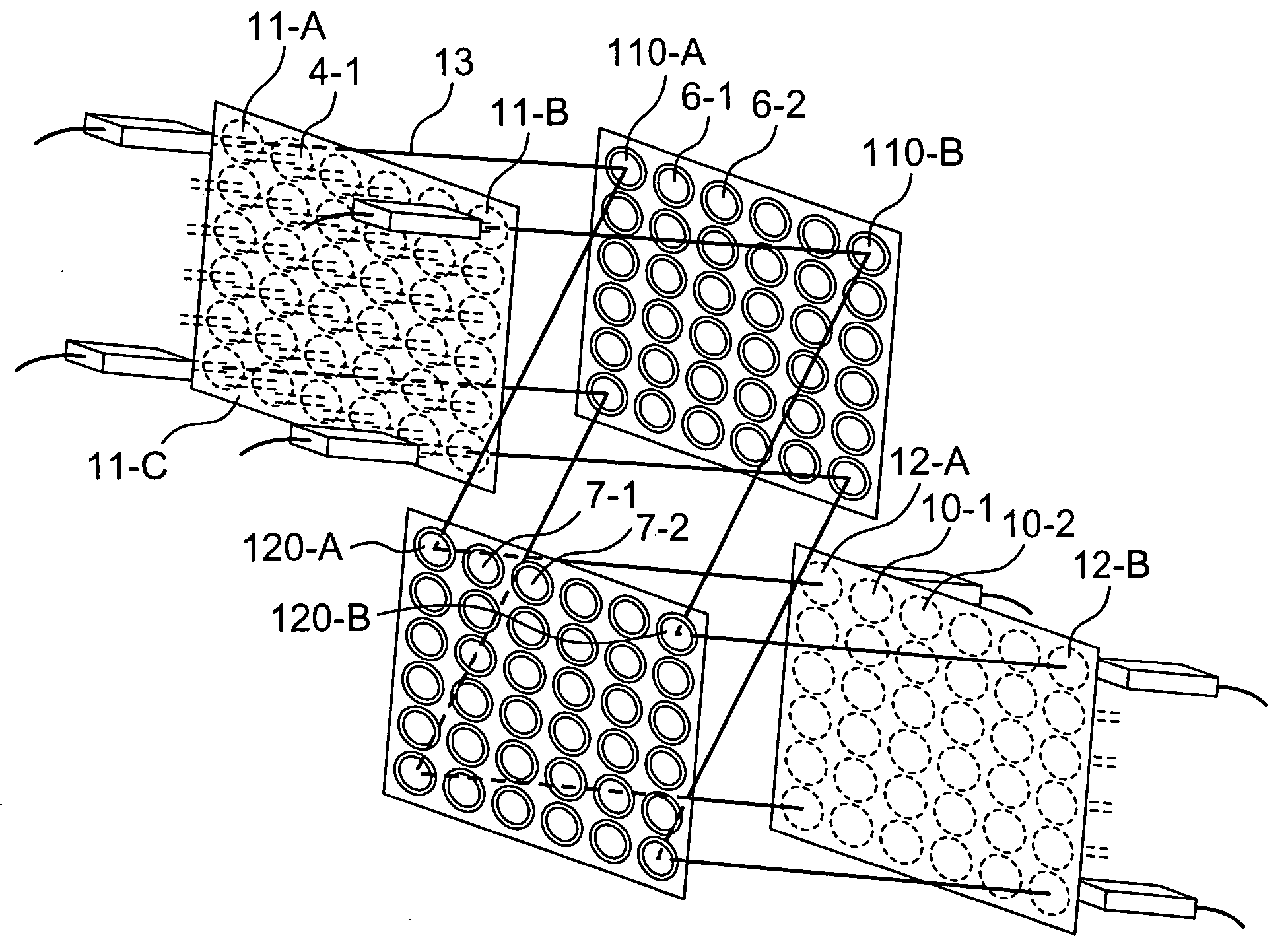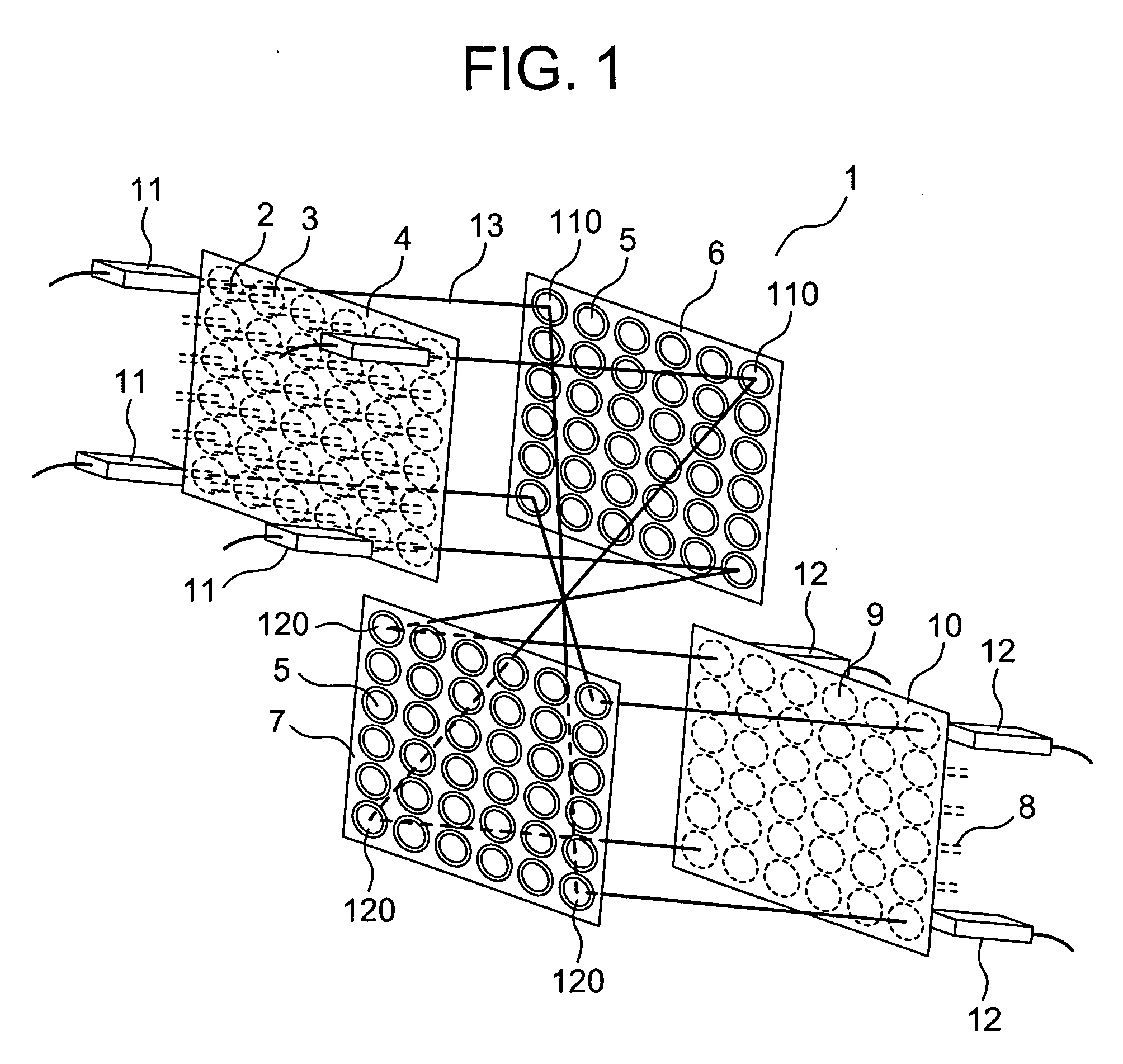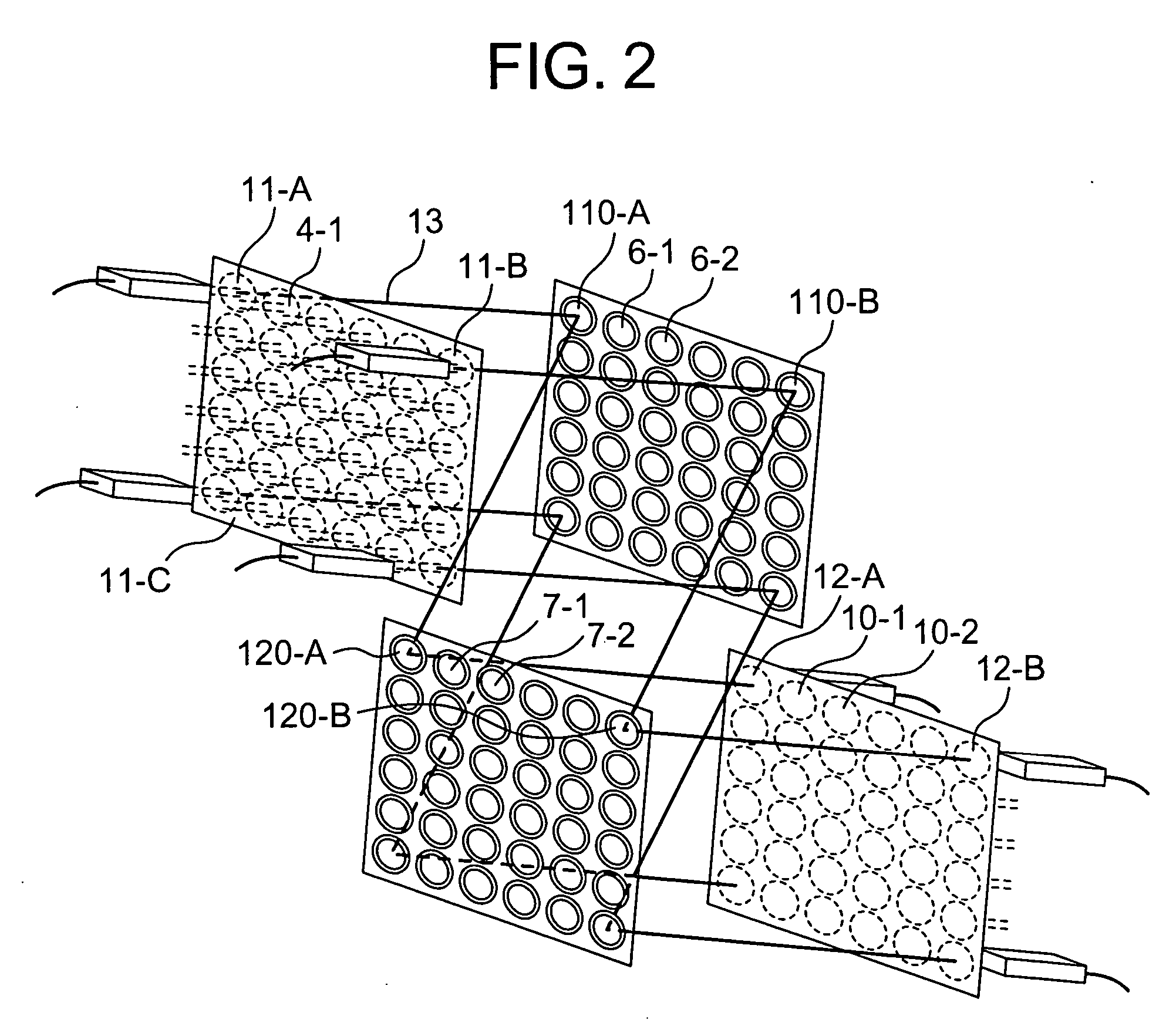Optical switch and a control method thereof
a control method and optical switch technology, applied in the field of optical switch, can solve the problems of optical coupling failure, large loss, and light beam failure to couple optically
- Summary
- Abstract
- Description
- Claims
- Application Information
AI Technical Summary
Benefits of technology
Problems solved by technology
Method used
Image
Examples
Embodiment Construction
[0027] Embodiments of the invention will be described hereunder in greater detail by making reference to the drawings. The present invention is in no way limited to configurations described in the specification and is not prevented from being applied with present-day known techniques or newly developable known techniques.
[0028]FIG. 1 is a schematic perspective view of an optical switch according to a first embodiment of the invention. The optical switch 1 comprises, as constituent components, an input-side collimator lens array 4 having arrayed input-side collimator lenses 3 optically coupled to a plurality of input-side optical fibers 2, primary and secondary mirror arrays 6 and 7 each having two-axially swingably movable, arrayed moving mirrors 5 and an output-side collimator lens array 10 having arrayed output-side collimator lenses 9 optically coupled to output-side optical fibers 8. The moving mirrors 5 of each of the primary mirror array 6 and the secondary mirror array 7 are...
PUM
| Property | Measurement | Unit |
|---|---|---|
| diameter | aaaaa | aaaaa |
| angles | aaaaa | aaaaa |
| control angles | aaaaa | aaaaa |
Abstract
Description
Claims
Application Information
 Login to View More
Login to View More - R&D
- Intellectual Property
- Life Sciences
- Materials
- Tech Scout
- Unparalleled Data Quality
- Higher Quality Content
- 60% Fewer Hallucinations
Browse by: Latest US Patents, China's latest patents, Technical Efficacy Thesaurus, Application Domain, Technology Topic, Popular Technical Reports.
© 2025 PatSnap. All rights reserved.Legal|Privacy policy|Modern Slavery Act Transparency Statement|Sitemap|About US| Contact US: help@patsnap.com



